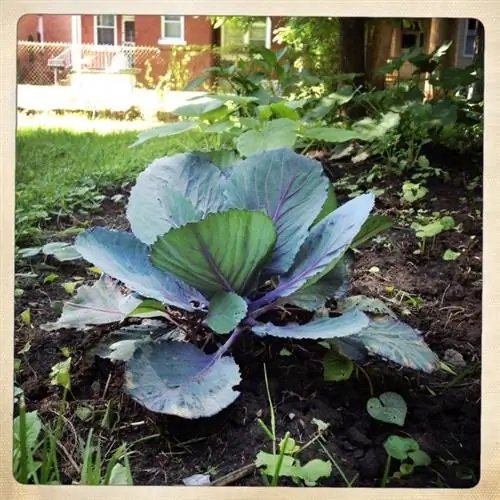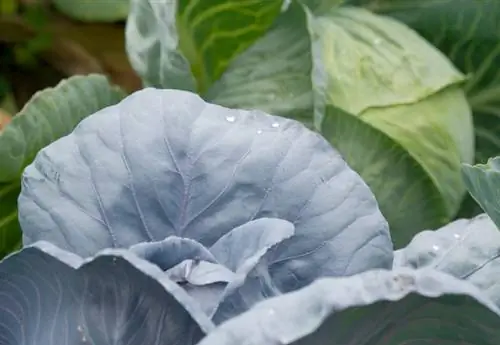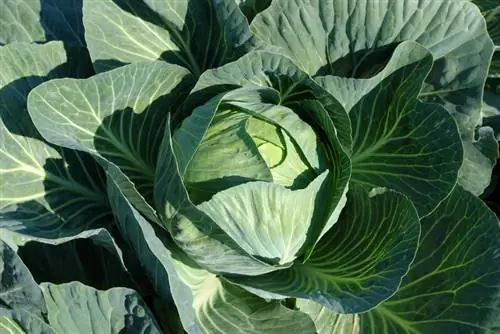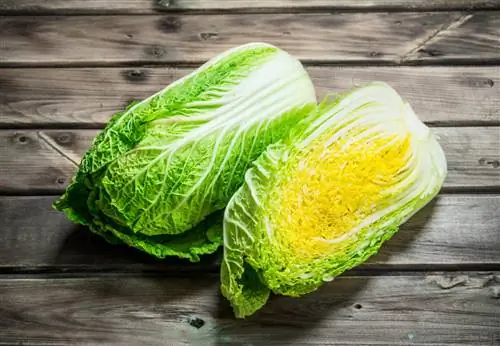- Author admin [email protected].
- Public 2023-12-16 16:46.
- Last modified 2025-01-23 11:19.
White cabbage, which is rich in vitamins and minerals, has been cultivated since the Stone Age. The popular vegetable requires a lot of care, but rewards it with a rich harvest. White cabbage is the perfect basis for homemade sauerkraut and hearty stews.
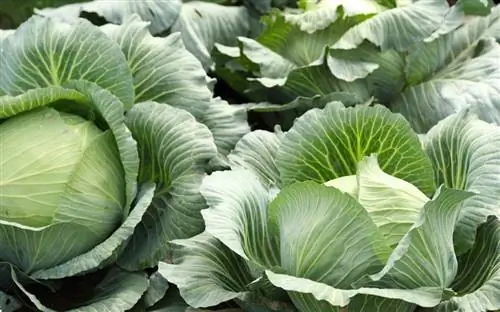
How to grow white cabbage successfully?
When growing white cabbage, well-fertilized, loamy and moist soils as well as crop rotation and mixed culture should be taken into account. Early, summer and autumn cabbage differ in when they are planted and should have sufficient space in the bed.
Prepare and fertilize soil well
White cabbage, like almost all brassica vegetables with the exception of kohlrabi and kale, is quite demanding. The vegetable, also known in southern Germany as white cabbage or head cabbage, thrives best on calcareous, clayey and moist soils. Cultivation fields that are located on the edge of moist meadows are particularly suitable - white cabbage loves it as moist as possible. For this reason, the vegetables should be watered regularly.
Before introducing the young plants into the bed, the soil should be freshly fertilized with rich manure, and it also makes sense to dig the soil as deeply as possible. White cabbage is a deep rooter and therefore requires loose soil even deep down. Furthermore, depending on the quality of the soil, it may make sense to enrich the soil with lime. Acidification of the soil should be prevented by adding wood ash. White cabbage is rather difficult to cultivate in elevated gardens because the soil here is usually too dry.
Observe crop rotation
Like all types of cabbage, white cabbage is very demanding on the soil. Cabbage should never follow cabbage, as this depletes the soil and attracts pests. Afterwards, no cabbage should be grown on the site for at least a year, and onion plants, leafy vegetables, radishes and radishes are also not recommended. Beds that have previously supported cucumbers or beans are ideal for planting white cabbage. White cabbage following carrots, peas, parsley or tomatoes also promises a good harvest. Furthermore, white cabbage is very suitable for mixed cultivation with strawberries, spinach or potatoes.
When to plant which varieties?
When it comes to white cabbage, a distinction is made between early varieties and summer and autumn cabbage. The plants are planted on the bed at very different times of the year.
1. Spring cabbage
Young plants of early white cabbage - the “Cape Horn” variety is very popular - can be planted outdoors from mid-April. They are usually spaced 40 x 50 cm apart - white cabbage needs as much space as possible in the bed. If the plants are planted too closely, pests find their way in more easily. You can harvest for the first time within about eight weeks.
2. Summer cabbage
Summer cabbage is planted in the ground at the end of June / beginning of July and can then be harvested at the beginning of autumn.
3. Autumn cabbage
The so-called autumn cabbage comes into the bed as young plants from October onwards and can also overwinter there. Frost does not harm the white cabbage, but the plants should be covered with pine branches from the beginning / middle of November. The harvest takes place the following spring.
Tips & Tricks
To achieve a better harvest result, water the white cabbage plants occasionally with water enriched with guano (the most nutrient-rich is pigeon droppings).


